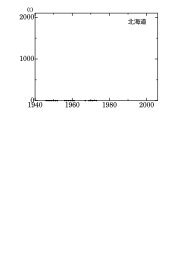7. Floral Resource Utilization by Stingless Bees (Apidae, Meliponini)
7. Floral Resource Utilization by Stingless Bees (Apidae, Meliponini)
7. Floral Resource Utilization by Stingless Bees (Apidae, Meliponini)
Create successful ePaper yourself
Turn your PDF publications into a flip-book with our unique Google optimized e-Paper software.
Name /sv04/24167_u07 10/27/04 05:27PM Plate # 0-Composite pg 84 # 12<br />
84 T. Nagamitsu and T. Inoue<br />
30<br />
20<br />
10<br />
A)<br />
T. canifrons<br />
Sucrose production rate (mg/h) No. of bees<br />
0<br />
30<br />
20<br />
T. collina<br />
10<br />
T. apicalis<br />
0<br />
30<br />
20<br />
10<br />
0<br />
5<br />
B)<br />
C)<br />
D)<br />
T. itama<br />
T. terminata<br />
T. nitidiventris<br />
T. ventralis<br />
0<br />
0<br />
6 9 12 15 18<br />
Time in day<br />
Figure <strong>7.</strong>6. Diurnal changes in flower visits <strong>by</strong> seven Trigona and nectar secretion in a<br />
canopy tree, Santiria laevigata. Flower visits (N bees collected in 10 min at flowers) of<br />
(A) aggressive T. canifrons, (B) non-aggressive Heterotrigona species, and (C) nonaggressive<br />
Lepidotrigona species (after Nagamitsu and Inoue 1997b).<br />
5<br />
Sucrose standing crop (mg)<br />
gressive behavior, interference competition, and time of the first arrival at<br />
honey-water feeders located on the towers in LHNP (Nagamitsu and Inoue<br />
1997b). Six Trigona and one honeybee, Apis koschevnikovi, frequently visited<br />
the feeders. Trigona fimbriata, T. apicalis, and T. melina were aggressive toward<br />
others. Trigona fimbriata dominated T. apicalis and T. melina, because it won<br />
the physical battles, and its interference more effectively reduced honeybee visits<br />
than did that of the other two species. Trigona ventralis, T. laeviceps and<br />
T. melanocephala were not aggressive. Visits <strong>by</strong> Trigona ventralis were reduced<br />
less after encounters with the aggressive species than T. laeviceps and<br />
T. melanocephala. Rank of the aggressive dominance based on these findings<br />
1<br />
0<br />
1




